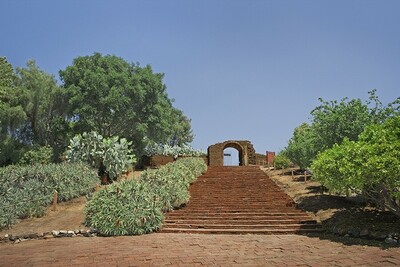Quick Facts
Common questions and historical facts
How many bells are there in the bell tower of the Historic Church?
Originally there were eight bells; now there are four.
Which Native Americans lived in the area of the Mission?
They were called “Luiseños” by the Spanish because they were associated with San Luis Rey. They were known as Payomkawichum, or “People of the West.” They referred to themselves as Ata’axam or “the People.”
Where did they get the timber to build the mission church roof and dome?
The logs came down from Mt. Palomar via the river and ox carts.
Why is the Mission named after a French king, Louis IX?
San Luis Rey (Spanish), or Saint Louis the King, was taught by the early Franciscans and is the patron of their 3rd order. He also was of Spanish blood on his mother’s side and died fighting in the Crusades. He was canonized in 1297.
How much land did the Mission have? How much land does it have today?
Mission lands ran 11 leagues north to south and 15 leagues east to west, approximately 950,400 acres. Today, the Mission is on 56 acres.
Why wasn’t the Mission built closer to the coast?
The site was chosen for the fertile valley and good source of fresh water for farming and raising livestock.
What does OFM mean?
OFM, Order of Friars Minor, is the designation of the Franciscan religious community that founded the missions and still live at Mission San Luis Rey today.
What was “secularization?”
When Mexico took over the missions in California it took away the authority of the padres, eventually disbanding the missions and selling off their lands.
Why are there three knots on the cord of the Franciscan habit?
The three knots represent the vows of their religious order – poverty, chastity and obedience.
What is the Pala Mission?
San Antonio de Pala was an assistancia, or sub-station to Mission San Luis Rey, serving the native population at the Pala ranch 24 miles away. It began as a granary in 1810 and soon included a chapel dedicated to St. Anthony. It is part of the San Diego Diocese and is the only mission to have remained in continuous service to the native people. San Antonio de Pala is open to visitors daily.
What was the lavanderia?
The lavanderia, or “laundry” was where mission residents bathed and washed their clothes. Water was channeled from the San Luis Rey River behind the Mission through aqueducts into a series of tile and stone pools.
